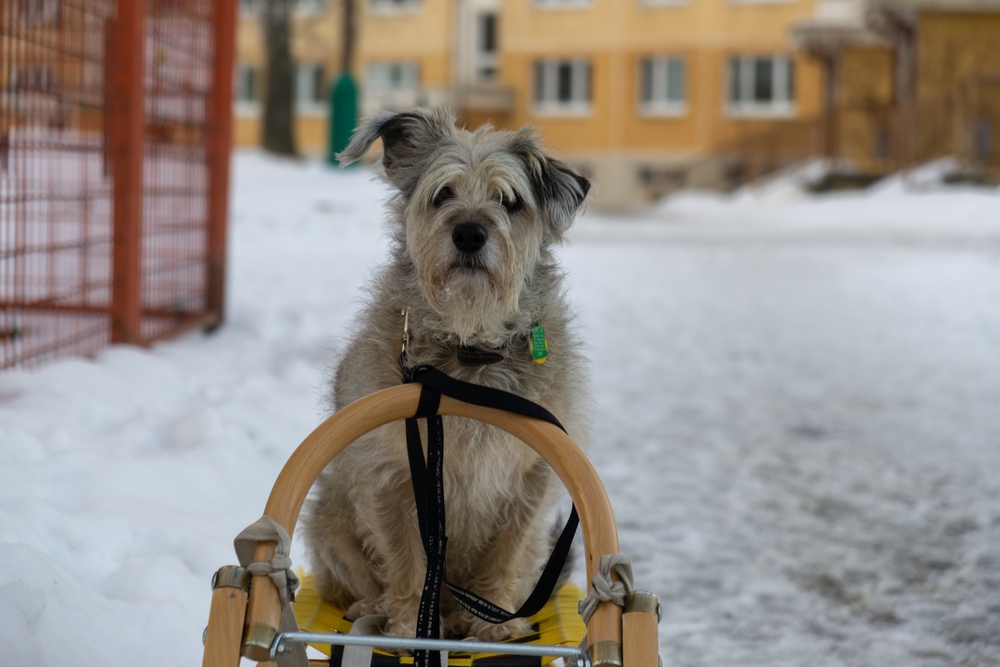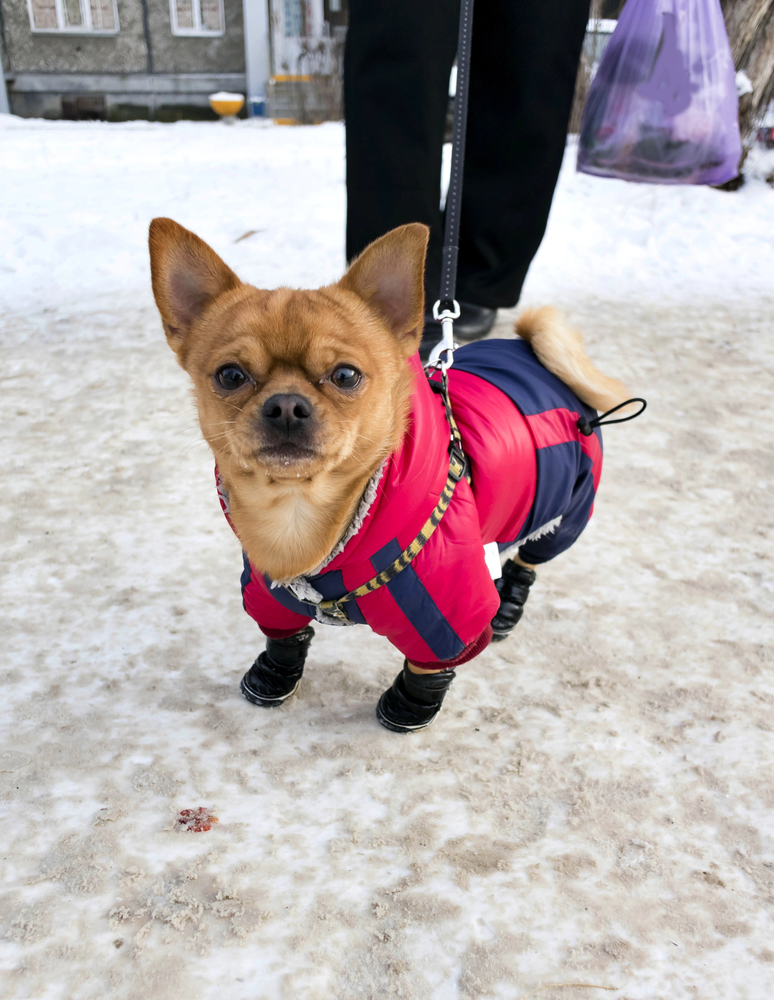My neighbor recently told me that a dachshund on our street had emergency surgery in January for a ruptured disc. I told her that I wasn’t surprised and then I explained that a new study discovered how cold weather impacts Intervertebral Disc Disease (IVDD) in dogs.
Table of Contents[Hide][Show]
The 6-year research project (2007-2012) conducted in Switzerland and published by the National Institutes of Health concluded that dogs showed more symptoms of IVDD during the winter months. Canine patients showed signs of pain in their backs, hind end weakness, herniated discs and paralysis.
The details of the study add an important piece of information in understanding Intervertebral Disc Disease in dogs. This article explains how the research was conducted and how you, as a pet parent, can protect your pup.

First let’s discuss IVDD
Intervertebral Disc Disease is the number one cause of canine paralysis. It’s a neurologic condition where the discs between the vertebrae in the spine age prematurely and have the potential to rupture.
Cold weather itself isn’t considered to be a direct cause of IVDD. However, like humans, frigid temperatures can lead to muscle stiffness, reduced flexibility and it can make existing back problems worse.
For dogs predisposed to IVDD, winter weather can trigger the first onset of the disease.
Dogs that are prone to Intervertebral Disc Disease
The majority of dogs who develop IVDD are chondrodystrophic breeds. The term refers to canines who have long spines and short legs.
Here’s a list of the most common chondrodystrophic breeds:
- Dachshunds
- Pekingese
- Basset Hounds
- Bulldogs
- Shih Tzus
- French Bulldogs
- Beagles
- Cocker Spaniels
- Lhasa Apsos
- Corgis
- Bichon Frise
Key facts about the Swiss study
For years, veterinarians have believed there is a correlation between the onset of IVDD and environmental factors, such as the weather. Researchers know that dogs who spend too much time in frigid temperatures are prone to developing hypothermia and frostbite, but the study wanted to dig deeper. The goal was to see if the cold could contribute to the first episode of Intervertebral Disc Disease.
Here’s how it worked:
- The medical records were examined of dogs who were admitted to two veterinary hospitals in Lake Geneva, Switzerland from 2007-2012.
- Each hospital admission had to be due to an “acute spinal injury due to IVDD.” The diagnosis was confirmed with a physical exam and an MRI.
- A score of 1-5 was assigned to each patient, based on the absence of “deep pain sensations” in the dog’s limbs.
- The location of the ruptured disc in the dog’s spine was also recorded.
- The Swiss Meteorological Institute kept records of the weather. This included the daily average temperature, precipitation, sunshine and humidity.
- Dogs with chronic cases of IVDD were excluded from the study.

Get the Essential Guide
The Essential Guide of Products for Handicapped Dogs e-book is a labor of love for me. I wrote it to answer your most pressing questions about where to find the best products for your wheelchair dog. You’ll find products you didn’t know existed and each will improve your dog’s quality of life. Print a copy and keep it by your side.
The outcome of how weather influences IVDD
The results of the study found that of all the weather conditions examined (rain, sun, wind, etc.) only a drop in the daily temperature effected the onset of IVDD. The highest incidence happened in January 2012 with 5 admissions to one of the participating veterinary hospitals.
The average temperature during that time was 39.8 degrees Fahrenheit, during the day and 32.9 degrees at night.
Other months with increased cases of IVDD occurred consistently when the temperature dropped in Fall and Winter. Each year the study found that between the months of September and December, there was a minimum of 2 and a maximum of 4 hospital admissions.
The temperatures during that period ranged from 60 degrees in September to 37 degrees in December.
During the period of January 1, 2007, to December 31, 2012, a total of 101 dogs with acute spinal cord injuries due to IVDD were admitted for care. It was the first admission for each canine patient.
Chart from National Library of Medicine

Other interesting facts from the study:
- There were nearly equal numbers of male (52) and female patients (49).
- The average age of the dogs was 6.2 years-old.
- Chondrodystrophic breeds were admitted most often, at a rate of 65%. The breed of dogs included: French bulldogs, Dachshunds, Cocker Spaniels, Bichon Frise and Beagles.
- The records also pointed out that less than 1 percent of French bulldogs and Dachshunds live in Switzerland, so their number of hospitalizations was especially significant.
- It’s also significant to note that almost 43% of the patients had a herniated disc in the (lumbar) lower portion of the spine.
How to protect your dog when the temperature drops

Keep your dog warm by dressing them in a winter jacket, rain coat or a snowsuit.
Cover your dog’s paws with comfortable waterproof boots.
Use a paw balm to the pads for added protection.
Shorten the length of walks and outings when the temperature drops.
Towel-dry your dog’s body and legs after coming indoors.





Leave a Reply